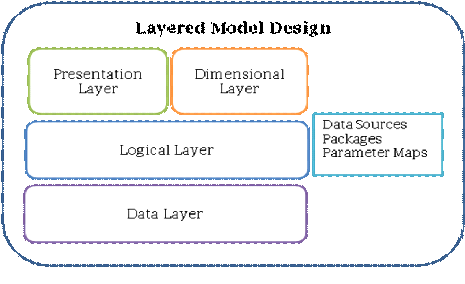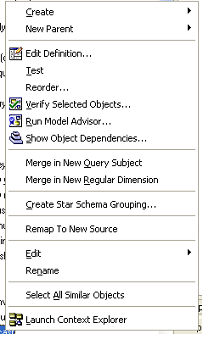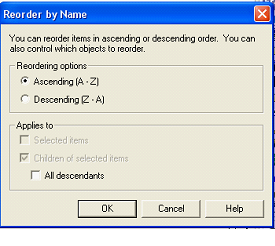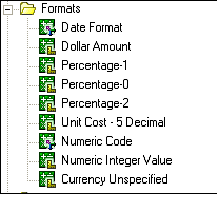Best Practices in Cognos 8 Framework Manager Model Design
For those starting out with Cognos 8, or even those who have worked with it for quite a while, Framework Manager model design can seem like a daunting or even overwhelming task. With so many options available, it can be hard to know what to consider during design, and how to promote stability and sustainability.
This is the first in a two-part article that will focus on the best practices, organization and overall methodology of Framework model development. As is often the case with complex tools, even developers who have worked with Cognos for a while can be confused on at least some of the concepts and considerations of model design. The focus of this first article will start from the beginning, and describe an overall 4 layer approach, detailing the purpose and reason for each of the four layers. Next month’s article will describe advanced best practices, and other tips.
Four Layer Approach
One of the basic tenets for best practice model design is to segment the model into four specific sections or layers (Data, Logical, Presentation and Dimensional). Each layer has a specific function and set of modeling activities. Generally, the layers build upon one another, with the data layer being the foundation of the model. Other areas, such as packages and connections are also important, but fall outside of the layers. Many of the best practices can be thought of in terms of what development activities should or should not be performed in each of the layers.

Data Layer
The data layer, also called the import layer, contains the data source query subjects, based directly on the underlying database objects. Whenever possible, use unmodified SQL ( “select * from Table Name”)to retrieve the table information. If you modify the SQL code or add a filter or a calculation to the data subject, it eliminates Framework Managers meta-data caching capabilities. This means that Cognos 8 will validate the query subject at report run time, adding overhead to the report load time. In some circumstances, this may be worth the trade-off, but should be avoided when possible.
Add joins, cardinality and determinants at this level. Cardinality, the definition of how joins should behave, is critical to a well developed model and can be confusing, even to seasoned veterans. In lieu of a lengthy discussion within this article, consider other IBM documents which offer a thorough discussion of cardinality, and the typical types of situations you may see.
Expect 20 to 40 percent of the model development to take place in the data layer.
Logical Layer
The logical layer adds the bulk of the meta-data to the model, and consequently is where most of the work is likely to occur. It provides business context and understanding to the data objects. Tasks include but are not limited to:
- Organizing elements into logical query subjects. This may mean combining elements from multiple tables, as in a snowflake dimension.
- Renaming element names, including descriptions and tooltips, and adding multiple language definitions if needed. Assign standardized and business-defined terms to the database columns, giving them business context.
-
Add calculations, and filters including stand-alone filters, embedded filters and security-based filters. Base these on the underlying data layer objects to make them less susceptible to errors when copying and reusing the query subject.
- Arrange query subject items in a user-friendly manner. Make use of folders to group similar items, or when there are too many items. I suggest 12 or fewer objects per folder, although I have used more when the logical breakout calls for it. For example, if there are many dates in a query subject, it might be more intuitive to have all the dates in a single large folder, than to try to subdivide each into smaller, random folders. Arrange the contents of the folder in an intuitive manner, such as alphabetic, or with the most commonly used items at top. HINT: It can be useful to use the “Reorder” command available within FM for this purpose.


- Assign output formats and usages to the reporting elements. This is easier if you create a small folder of trivial calculations, used only to provide standardized object format templates. The formats can easily be copied to target items by multi-selecting, and dragging the topmost format through the list.

- Add prompts, including cascading prompts, and prompt-based calculations.
Roughly 50 to 70 percent of the modeling work occurs in this section.
Presentation Layer
The importance of making information easy for report writers to use is frequently underestimated, but is a critical component to driving user adoption. Fortunately, this can be a simple step. The presentation layer is used only as an organization structure in order to make it easier for report writers to more easily find their needed information. This layer includes only shortcuts to existing items in the logical layer, plus organization items such as folders and namespaces.
For example, create a namespace called Orders and include shortcuts to the ten or twenty relevant query subjects, out of perhaps a hundred or more query subjects in the logical layer. Also include shortcuts to relevant filters. Commonly used query subjects (such as Items or Customers) will appear in multiple areas. Rename the shortcuts to something which provides helpful business context.
For organizing major groupings, you can use either folders or namespaces. However be aware that namespace names must be unique, and that items within a namespace must likewise be unique. So, if you use folders for your major groupings, you cannot have a shortcut named “Items” in more than one folder. You must rename them to unique names, such as “Order Items”. For this reason in particular, I generally prefer to use separate namespaces.
The presentation layer takes approximately 10% of the overall model design effort.
Dimensional Layer
The dimensional layer is required only for models which include dimensionally modeled data. Leaving aside the trivial situations where cubes are simply imported into the model, this includes dimensionally modeled relational data (DMR).
Specifically, this is for creating Dimensional and Measure Dimension Query subjects. Much like the presentation layer, this layer also is built upon the logical layer, which leverages the effort put into that layer. Apply the element renaming, descriptions, tooltips in the logical layer, and they can be reused in the dimensional layer, with some help from the search tool.
Finally, note that when you are creating the final package, you should hide the data and logical layers so that the user will only see the presentation and/or dimensional layers.
Coming next month… Advanced best practices for Cognos modeling.


